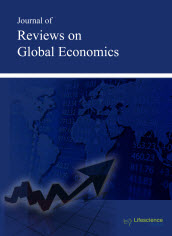|
|
Abstract: A few years ago we have discovered the effect of the "golden age" of company (Brusov et al. 2015): it was shown for the first time that valuation of the weighted average cost of capital, WACC, in the Modigliani – Miller theory (Modigliani et al. 1958; 1963; 1966) is not minimal and valuation of the company capitalization is not maximal, as all financiers supposed up to this discovery: at some age of the company its WACC value turns out to be lower, than in Modigliani – Miller theory and company capitalization V turns out to be greater, than V in Modigliani – Miller theory. It was shown that, from the point of view of cost of attracting capital there are two types of dependences of weighted average cost of capital, WACC, on the company age n: monotonic descending with n and descending with passage through minimum, followed by a limited growth. In practice there are companies with both types of dependences of WACC on the company age n. In this paper we investigate which companies have the "golden age", i.e. obey the latter type of dependence of WACC on n. With this aim we study the dependence of WACC on the age of company n at various leverage levels within wide spectrum of capital costs values as well as the dependence of WACC on leverage level L at fixed company age n. All calculations have been done within modern theory of capital cost and capital structure BFO by Brusov–Filatova–Orekhova (Brusov et al. 2011a,b,c,d,e; 2012 a,b; 2013 a,b,c; 2014 a,b; Filatova et al. 2008). We have shown that existence of the "golden age" of company does not depend on the value of capital costs of the company, but depends on the difference between equity k0 and debt kd costs. The "golden age" of company exists at small enough difference between k0 and kd costs, while at high value of this difference the "golden age" of company is absent: curve WACC(n) monotonic descends with n. For the companies with the "golden age" curve WACC(L) for perpetuity companies lies between curves WACC(L) for company ages n=1 and n=3, while for the companies without the "golden age" curve WACC(L) for perpetuity companies is the lowest one. In previous paper (Brusov et al. 2015) we have found also a third type of WACC(n) dependence: descending with passage through minimum, which lies below the perpetuity limit value, then going through maximum followed by a limited descending. We called this effect "Kulik effect". In this paper we have found a variety of "Kulik effect": descending with passage through minimum of WACC, which lies above the perpetuity limit value, then going through maximum followed by a limited descending. We call this company age, where WACC has a minimum, which lies above the perpetuity limit value, "a silver age" of the company. Because the cost of attracting capital is used in rating methodologies as discounting rate under discounting of cash flows, study of WACC behavior is very important for rating procedures. The account of effects of the "golden (silver) age" could change the valuation of creditworthiness of issuers. Remind that, since the "golden age" of company depends on the company's capital costs, by controlling them (for example, by modifying the value of dividend payments, that reflect the equity cost), company may extend the "golden age" of the company, when the cost to attract capital becomes a minimal (less than perpetuity limit), and capitalization of companies becomes maximal (above than perpetuity assessment) up to a specified time interval. We discuss the use of opened effects in developing economics. |





